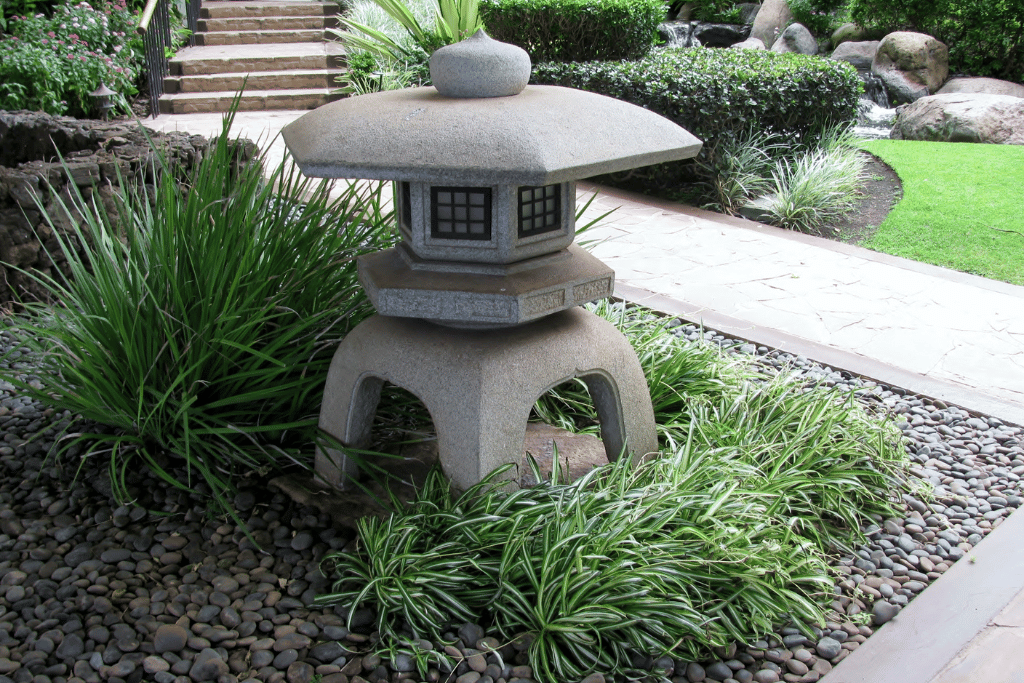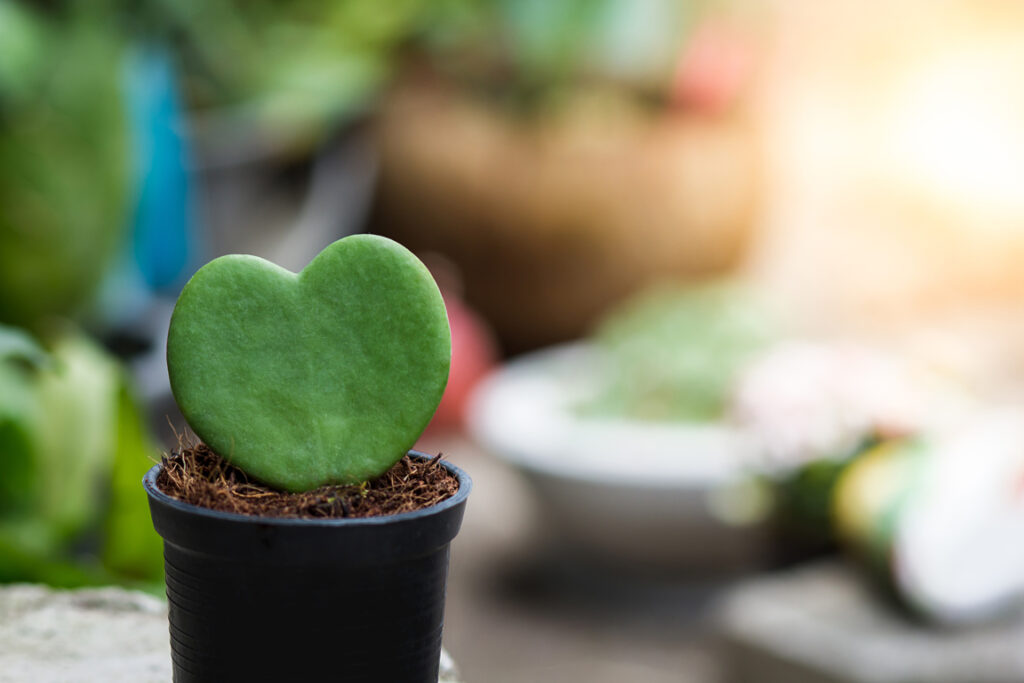
Spider plants are native to the tropical and Southern regions of the African continent, Australia and Asia. There are almost 200 species generally referred to as spider plants, under the genus Chlorophytum.
Standard features include a central rosette from which long, thin leaves emerge. The root system is made up of tubers. Some species bloom, usually small white flowers. There are also some species that reproduce vegetatively by sending out stems that develop new baby plants, much like a strawberry.
Their resilience and ease of growth have led to their well-established popularity as a houseplant all around the world.
Types of Spider Plants
All spider plants fall under the genus Chlorophytum but the attributes of species and cultivated varieties vary significantly. As an exceptionally popular houseplant, you can imagine the plant has been propagated and bred to meet specific preferences and have unique, distinct characteristics.
Despite the wide diversity in the world of spider plants, they can all pretty much fit into three different categories.
Variegated Spider Plants
Most varieties of spider plants fall under the category of variegated, meaning that they have different colors and patterns within the leaves. These types of spider plants are common and the most readily available. The diverse combinations of colors and designs on the leaves will add interest and flare to your home.
Curly Spider Plants
Varieties of spider plants that have curly leaves are rare, in demand and highly sought after. The rounded flow of the leaf gives the plant a unique look among typical spider plants. Almost as if the plant had just gone to the salon for a perm, the curls are cute and are a lighthearted touch to standard varieties.
Solid Colored or Non-Variegated Spider Plants
Interestingly enough, a plain, solid color-leafed spider plant is not easy to find. Most varieties tend to have some variegation of colors and patterns. This makes a spider plant with a solid green leaf quite desirable and may only be available through specialty nurseries or online sellers.
Popular Spider Plant Varieties
Spider plants are easily one of the top houseplants around the world. Read on to learn about the favorite varieties among indoor plant growers.
Variegated Spider Plant ‘Variegatum’

The South African native tropical plant is easy to care for and low maintenance overall. The cultivated variety ‘Variegatum’ has leaves that are easily recognized by their bright white edges that surround a solid green center.
In the right conditions, the plant can get to two feet tall. Keep it in a spot that gets plenty of bright indirect light. Make sure the soil is well-draining and kept evenly moist at all times. Temperatures between 70 and 90 degrees are ideal and the humidity should be kept high to emulate its native tropical environment.
Variegated Spider Plant ‘Vittatum’

The variegated cultivar ‘Vittatum’ has been honored with the Royal Horticultural Society’s Award of Garden Merit and for good reason. The foliage is quite unique and the plant is a breeze to maintain.
Like its relative ‘Variegatum’, ‘Vittatum’ is native to South Africa but considered a bit more special. Its leaves are the opposite of ‘Variegatum’ and the center is a soft, creamy white color that is surrounded by clean green edges. To see the majority of the leaf in an ivory sheen is marvelous.
Slender leaves emerge from the central rosette and grow long and hang down in a spider-like fashion. It’s the perfect plant for hanging baskets.
‘Vittatum’ prefers to be in a bright, indirectly lit area. The soil should be kept only slightly moist and drain well. It will stand temperatures down to 55 degrees and prefers milder temperatures in the 60s. Moderate to high humidity is advised to keep your ‘Vittatum’ spider plant well hydrated.
Bonnie Spider Plant

Bonnie spider plants are a popular variety due to their long leaves that curl and twist freely. True bonnie types develop leaves that are solid green and slightly wider than other spider plants. Bonnie plants will also be more compact in stature.
Bonnies like most spider plants will be easy to take care of under the right conditions. Give them plenty of bright indirect light and make sure their soil drains well. Keep the soil slightly moist. Bonnie plants will appreciate a humid atmosphere and warm temperatures between 70 and 90 degrees.
They won’t grow large at all, less than a foot tall and wide. This makes bonnie spider plants the perfect plant to fit into any space in your home, provided they receive enough light.
Variegated Bonnie Spider Plant

Variegated bonnie plants are real eye-catchers. The curly, candy-striped leaves are quite attractive and make a showy addition to any space in the home. The variegated leaves are the only real difference between this plant and a true bonnie plant, although the variegated variety is more common than its solid-colored counterpart.
Keep temperatures warm but not too hot, within the 70-90 degree range will do just fine. The small stature of bonnie plants may tempt you to put them in an out-of-the-way place but their beautiful variegated leaves deserve to be shown off. Place your bonnie plant somewhere it receives lots of bright, indirect light. Make sure the soil drains well and is kept evenly moist with humid air.
Your variegated bonnie plant will thrive in these conditions and please all who encounter its charming curly cue leaves.
Zebra Spider Plant

The zebra spider plant is a different species than the previously mentioned varieties. It is native to tropical regions of the African continent.
The leaves of Chlorophytum laxum ‘Zebra’ are more grass-like than other types of spider plants. They have a grassy texture and blade-like look while staying stouter than the leaves of other spider plant varieties. True to its name the zebra spider plant has white stripes around the edges of the leaves with one broad green stripe down the middle.
Zebra spider plants readily produce baby plants, sometimes referred to as spiderettes or pups, at the end of their running stems, making them a popular variety to propagate.
A mature zebra spider plant will get to be about a foot tall and spread two feet wide. It has similar requirements as other spider plant varieties, except it likes temperatures a bit cooler. Zebra plants will be happiest at 65-75 degrees. Plenty of bright, indirect light should be supplied, as well as well-draining soil and humid air.
Ocean Spider Plant

Ocean spider plants are miniatures that only grow to be about eight inches tall and wide. But their stature doesn’t detract from the special features of this intriguing plant. The green leaves are outlined by delicate white stripes. They also produce delicate, white star-shaped flowers and develop “spiderettes” from their running stems.
Ocean spider plants like it on the cooler side and enjoy temperatures around 60 degrees. They prefer medium to high humidity and need plenty of bright, indirect light. Make sure the soil drains well and is kept slightly moist and a bit drier in the winter.
Place your ocean spider plant on a kitchen table, the corner of your work desk, on a bookshelf or in a hanging basket; anywhere everybody will be able to enjoy its cute foliage and pretty white flowers!
Fire Flash Spider Plant

Possibly the most unique plant on this list is the fire flash spider plant. The species is classified as amaniense and quite different looking than the more common comosum species. It also goes by the name Green Orange, for obvious reasons. It’s a slow grower but certainly does not disappoint.
Instead of the classic spider plant look, fire flash produces broad green leaves that feature bright orange stalks. The plant itself more closely resembles an exotic type of hosta or possibly a croton plant. The interesting features don’t end with the foliage, as this variety will produce small white flowers during the warm seasons.
As a native of tropical and subtropical regions in Africa fire flash prefers warm temperatures between 70-90 degrees. Keep it well-lit with bright indirect light. Soil should be well-draining and kept evenly moist. It will grow to be about two feet tall and is generally easy to care for. Grant your fire flash spider plant these conditions and you’ll be rewarded with bright gold and green colors all year long.
If you’re into orange foliage, I would recommend looking into the prince of orange plant.
Hawaiian Spider Plant

This special spider plant originates in the Hawaiian islands and is classified as Chlorophytum viridescens. It also goes by the common names golden light or golden glow. Hawaiian spider plant is a stout, variegated version. Its distinguishing characteristic is a yellow central strip down the slender leaf, surrounded by a bright green trim.
Hawaiian spider plants only get to be 6-12 inches tall, making them a great accent to your home and an excellent addition to any plant collection. It generates plenty of spiderettes so would be the perfect plant for a propagation enthusiast.
Despite being a different species, Hawaiian spider plants enjoy the same conditions as others. Warm temperatures up to 90 degrees, high humidity, well-drained, moist soil and bright indirect light.
Top Tips for Growing Spider Plants

- Due to high humidity levels, spider plants are a great option for freshening up your bathroom. Just be sure they have access to plenty of indirect light.
- Use potting mixes that drain well, with ingredients like perlite, vermiculite or coarse sand, and have a neutral pH between 6.0 and 7.2.
- It’s easy to meet the light requirements for spider plants; as much bright, indirect light as possible. Don’t put them in direct sun because it will burn their leaves and stunt growth.
- Mist your plant regularly or use a pebble tray to help increase humidity levels.
- Only water your spider plant once the top inch or two of soil dries out. Otherwise, it can be easy to inadvertently overwater.
- Water deeply but infrequently. Don’t let your spider plant stand in any excess runoff.
- Fertilize sparingly during the spring and summer. Reduce fertilizer in the fall and don’t feed at all during the winter.
- Trim off fading or dead foliage to keep your spider plant perky.
- Snip off baby plants and repot them to start brand new plants!
- Repot your spider plant when roots begin to emerge from the drainage holes.
Weaving a Web of Spider Plants
This list is by no means an exhaustive catalog of all of the wonderful varieties of spider plants. Many different species and cultivars exist, some more obscure than others. No matter what variety is your favorite, if you’re able to get your hands on any type of spider plant, it surely will brighten up the home, purify the air and impress guests and other indoor gardening aficionados.



